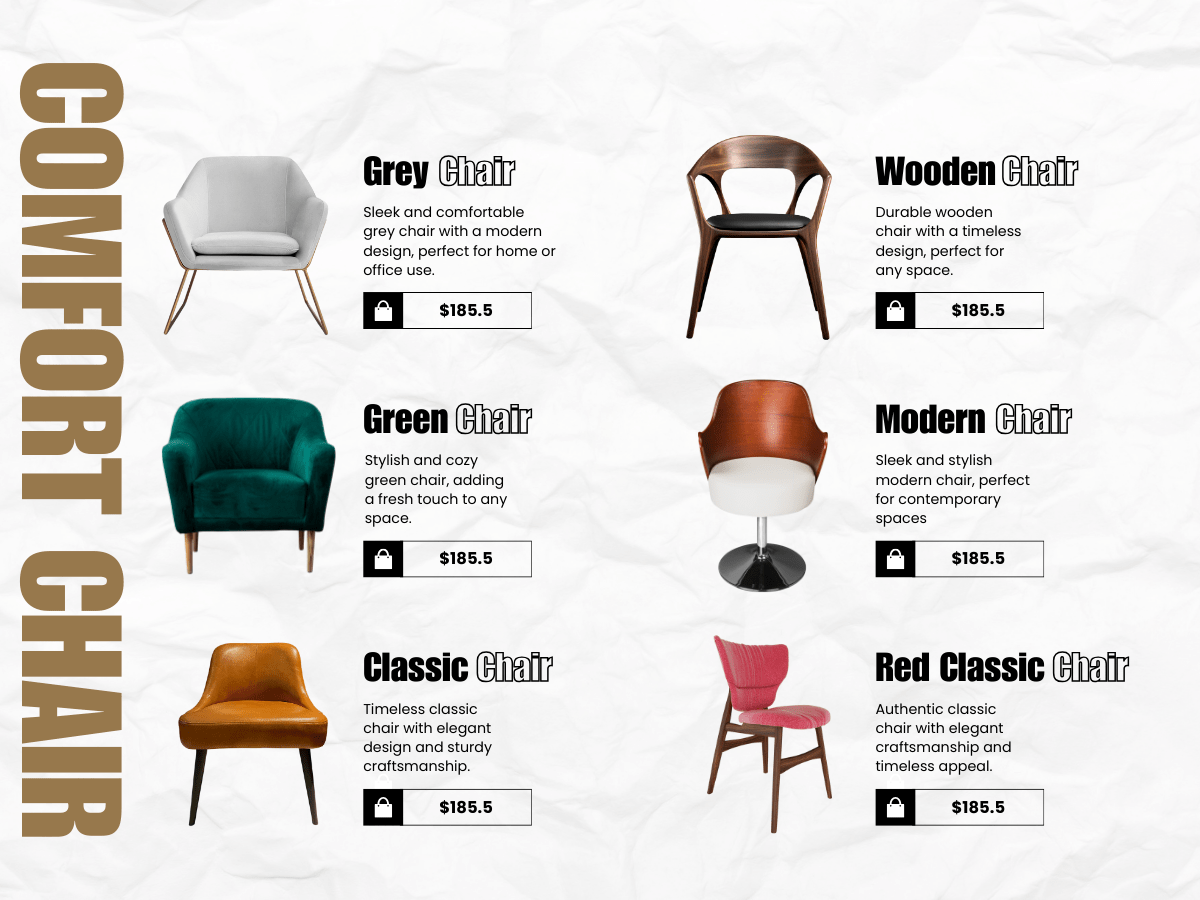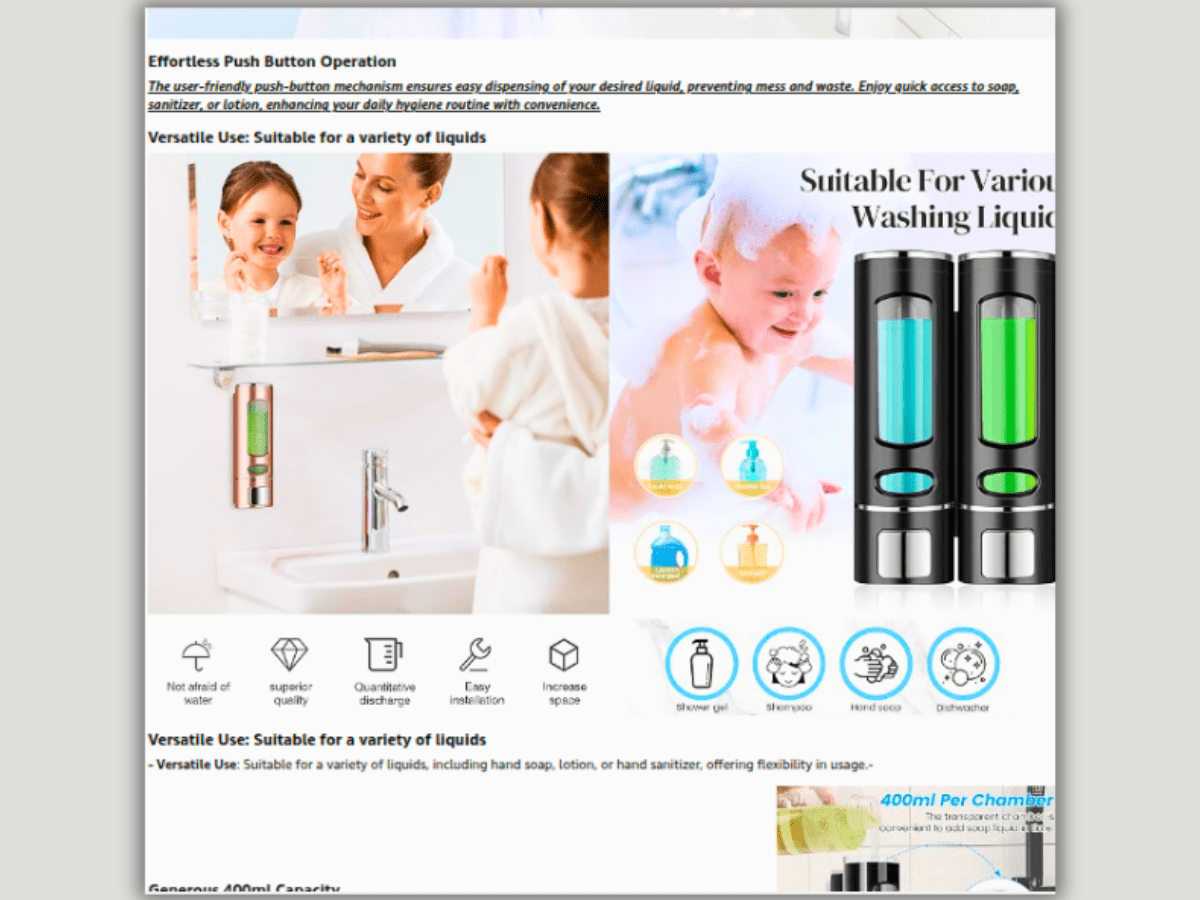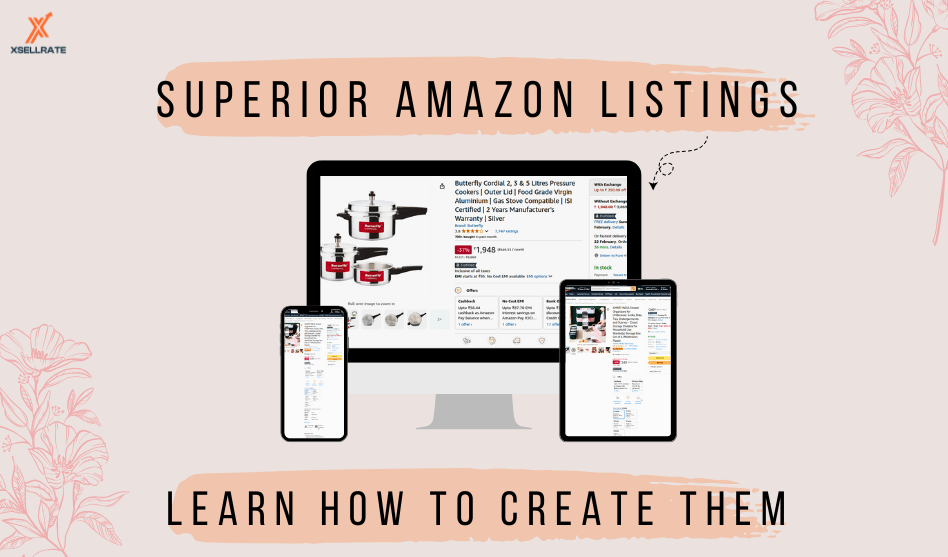Amazon is a highly competitive marketplace, and to succeed, you need Amazon product listings that convert visitors into buyers. A high-converting Amazon product listing not only attracts potential customers but also compels them to make a purchase. This guide will explore the essential elements of a powerful Amazon product listing and practical strategies to optimize each component for maximum conversion.
How to Craft a Compelling Amazon Product Listings Title?
A. Your product title is the first thing potential buyers see, and it plays a crucial role in search rankings and click-through rates.
B. Include Relevant Keywords: Use high-volume, relevant keywords naturally in the title to improve the search visibility of your Amazon product listing.
C. Keep It Readable: Avoid keyword stuffing; make the title clear and easy to read.
D. Highlight Key Features: Mention important product attributes like size, color, material, or unique selling points of your Amazon product listing.
E. Follow Amazon’s Character Limits: Stay within the 200-character limit to ensure your title is fully visible.
Example: “Stainless Steel Insulated Water Bottle – Leakproof, BPA-Free, 24oz – Keeps Drinks Cold for 24 Hours”
Read Related Blog: A Guide to Amazon Product Research
Optimize Amazon Product Listing Images for Conversions
A. High-quality images help customers visualize the product and influence their purchasing decisions.
B. Use High-Resolution Photos: Ensure images are at least 1000×1000 pixels for zoom functionality.
C. Showcase Multiple Angles: Include close-ups, lifestyle shots, and packaging images.
D. Use Infographics: Highlight key benefits and dimensions with easy-to-read infographics of your Amazon product listing.
E. Follow Amazon’s Image Guidelines: The main image should have a pure white background and show only the product.
Tip: A/B tests different images to see which ones perform best for your Amazon product listing.
You Need to Write Persuasive Bullet Points
Your bullet points should focus on the product’s benefits and unique selling propositions (USPs).
A. Address Customer Pain Points: Show how your product solves a problem.
B. Highlight Key Features: Mention material, durability, ease of use, etc.
C. Keep It Concise: Use short, impactful sentences (Amazon allows a maximum of 5 bullet points and up to 255 characters per bullet point).
D. Use Power Words: Words like “effortless,” “game-changer,” and “must-have” create urgency in your Amazon product listing.
Example:
✅ Long-Lasting Insulation: Keeps drinks hot for 12 hours and cold for 24 hours.
✅ Leakproof & BPA-Free: No spills or harmful chemicals – perfect for travel and outdoor activities.
Always ensure that bullet points of your Amazon product listing align with Amazon’s guidelines and incorporate relevant customer search terms to enhance listing visibility and product awareness. For businesses looking to maximize sales, I highly recommend expert support from Xsellrate, proven experts in driving millions in revenue through organic strategies and paid advertising.
Write a Compelling Product Description
The product description is your opportunity to tell a story and persuade hesitant buyers. It is important to sell at Amazon.
A. Use Engaging Copy: Describe how the product enhances the buyer’s life.
B. Break It Into Short Paragraphs: Make it easy to read by avoiding long blocks of text.
C. Incorporate Keywords Naturally: Help boost your product’s search ranking.
D. Use HTML Formatting: Use bold text and bullet points to enhance readability.

Example: “Stay hydrated in style with our Stainless Steel Insulated Water Bottle. Whether you’re at the gym, hiking, or commuting, this leakproof bottle keeps your drink at the perfect temperature for hours. Say goodbye to plastic waste and hello to sustainable hydration!”
Leverage A+ Content (Enhanced Brand Content) to Sell at Amazon
If you’re a registered brand on Amazon, A+ Content allows you to add visually rich descriptions.
A. Use High-Quality Images and Graphics to tell a compelling brand story.
B. Create Comparison Charts to differentiate your product from competitors.
C. Add Lifestyle Images that show your product in real-world use.

Pro Tip: A+ Content can increase conversions by up to 10%
Use Backend Keywords Strategically
Amazon’s backend search terms help improve discoverability without cluttering your listing.
A. Avoid Repetition: Do not use keywords already in the title or bullet points.
B. Use Synonyms & Misspellings: Include alternative terms customers might search for.
C. Follow Amazon’s 250-byte Limit: Ensure you don’t exceed the character limit.

Example: If selling a yoga mat, backend keywords could be “exercise mat, pilates mat, workout pad.”
Pricing the Product Competitively is Important to Sell at Amazon!
Pricing directly impacts conversions, so finding the right balance is key.
A. Analyze Competitor Pricing: Check similar products to determine the optimal price range.
B. Use Dynamic Pricing Tools: Tools like RepricerExpress help adjust prices based on demand and competition.

C. Leverage Promotions & Coupons: Limited-time discounts or Amazon coupons can drive impulse purchases.
Encourage & Manage Customer Reviews
Positive reviews build trust and influence purchase decisions.
A. Provide Excellent Customer Service: Quickly respond to inquiries and resolve issues.
B. Use Amazon’s Request a Review Button: Politely ask for feedback after delivery.
C. Follow Up with Customers: Send a thank-you message and encourage honest reviews.

D. Respond to Negative Reviews: Show professionalism and willingness to resolve concerns.
Monitor and Optimize Your Listing Regularly to Sell at Amazon
Amazon’s marketplace constantly changes, so keep improving your listing.
A. Track Conversion Rates: Use Amazon Seller Central to monitor performance.
B. Run A/B Tests: Experiment with different titles, images, and bullet points.
C. Update Content Based on Trends: Adjust based on seasonal demand and competitor strategies.
D. Use Amazon’s Listing Quality Dashboard: Identify areas for improvement.

